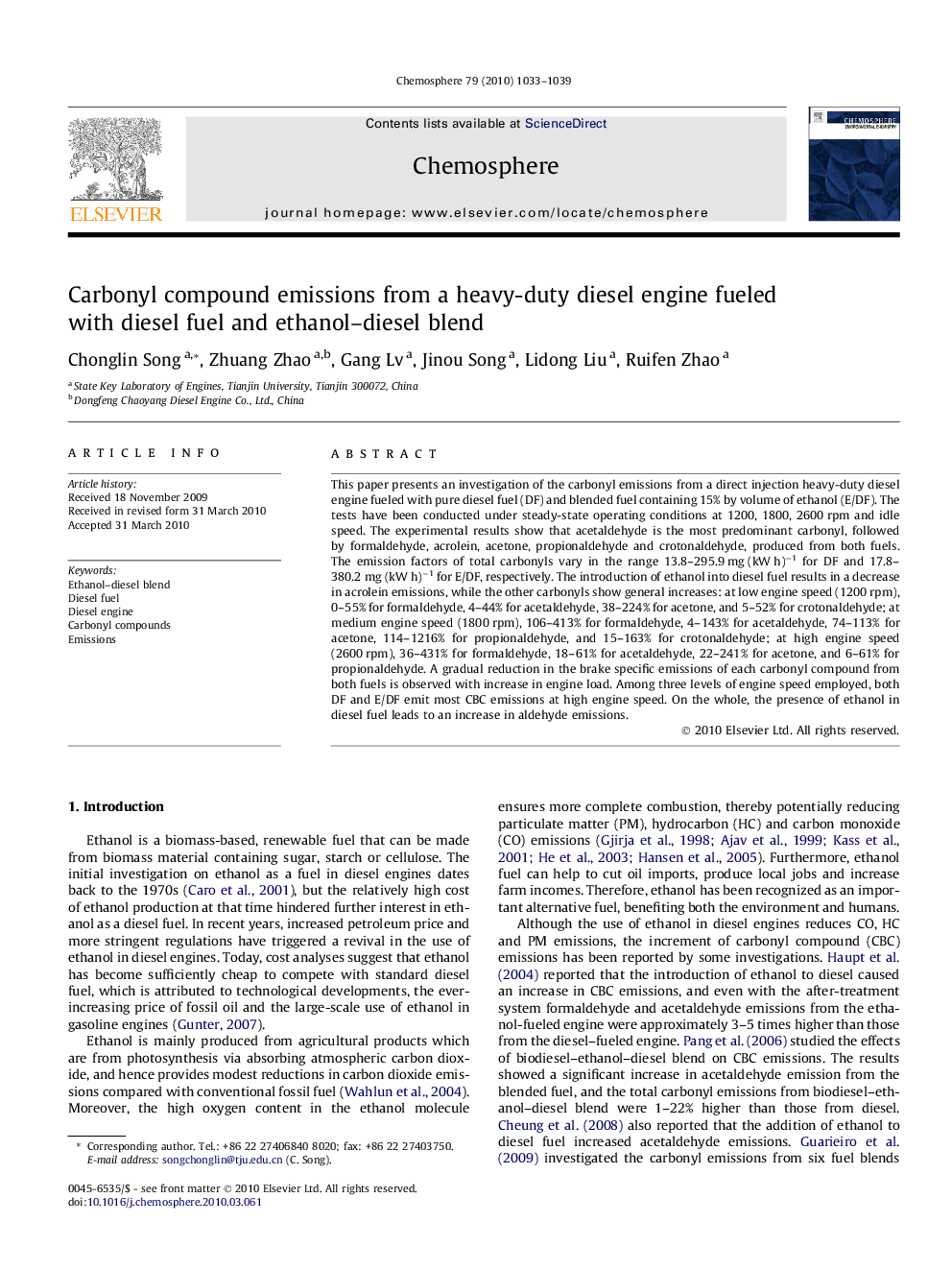| Article ID | Journal | Published Year | Pages | File Type |
|---|---|---|---|---|
| 4412229 | Chemosphere | 2010 | 7 Pages |
This paper presents an investigation of the carbonyl emissions from a direct injection heavy-duty diesel engine fueled with pure diesel fuel (DF) and blended fuel containing 15% by volume of ethanol (E/DF). The tests have been conducted under steady-state operating conditions at 1200, 1800, 2600 rpm and idle speed. The experimental results show that acetaldehyde is the most predominant carbonyl, followed by formaldehyde, acrolein, acetone, propionaldehyde and crotonaldehyde, produced from both fuels. The emission factors of total carbonyls vary in the range 13.8–295.9 mg (kW h)−1 for DF and 17.8–380.2 mg (kW h)−1 for E/DF, respectively. The introduction of ethanol into diesel fuel results in a decrease in acrolein emissions, while the other carbonyls show general increases: at low engine speed (1200 rpm), 0–55% for formaldehyde, 4–44% for acetaldehyde, 38–224% for acetone, and 5–52% for crotonaldehyde; at medium engine speed (1800 rpm), 106–413% for formaldehyde, 4–143% for acetaldehyde, 74–113% for acetone, 114–1216% for propionaldehyde, and 15–163% for crotonaldehyde; at high engine speed (2600 rpm), 36–431% for formaldehyde, 18–61% for acetaldehyde, 22–241% for acetone, and 6–61% for propionaldehyde. A gradual reduction in the brake specific emissions of each carbonyl compound from both fuels is observed with increase in engine load. Among three levels of engine speed employed, both DF and E/DF emit most CBC emissions at high engine speed. On the whole, the presence of ethanol in diesel fuel leads to an increase in aldehyde emissions.
